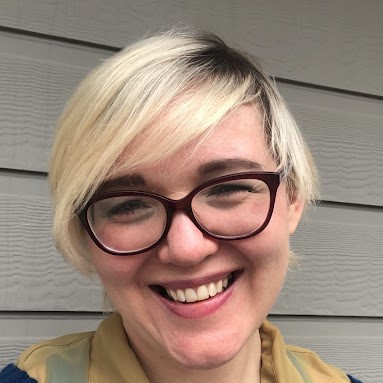UCR: Health Insurance Explained [2025]
Secured with SHA-256 Encryption






Table of Contents
Table of Contents


Insurance Content Team Lead
Laura Kuhl holds a Master’s Degree in Professional Writing from the University of North Carolina at Wilmington. Her career began in healthcare and wellness, creating lifestyle content for doctors, dentists, and other healthcare and holistic professionals. In 2018, she started writing for the cannabis industry. She curated news articles and insider interviews with investors and small business ...
Laura Kuhl


Commercial Lines Coverage Specialist
Michael Vereecke is the president of Customers First Insurance Group. He has been a licensed insurance agent for over 13 years. He also carries a Commercial Lines Coverage Specialist (CLCS) Designation, providing him the expertise to spot holes in businesses’ coverage. Since 2009, he has worked with many insurance providers, giving him unique insight into the insurance market, differences in ...
Michael Vereecke
Updated January 2024
- The widely accepted usage of UCR represents the usual, customary and reasonable standard
- The health insurance industry uses UCR for setting insurance coverage for medical services
- UCR helps set uniform pricing for medical services
- UCR can help insurers determine the allowed amount for a claim
- Consumers that use their plan’s network providers usually pay no UCR fees
Payers frequently use the UCR standard when making decisions on fair prices for medical services. The usual, customary, and reasonable price is the amount paid in a particular geographic area for a medical service, or a similar medical service.
This practice protects insurers and puts consumers at risk for unexpected costs. UCR is the main ingredient in setting the allowed costs on any claim. The allowed cost is the most a payer intends to pay for a given service.
Make sure to compare costs with our free insurance comparison tool above!
Insurance Cost Sharing
After reaching the deductible threshold, consumers expect to get cost sharing in the percentage agreed in the insurance contract. Many insured consumers get an unwanted surprise when they have to pay more than the expected percentage of coinsurance.
The cause of the unwanted payment may be the UCR insurance fees. The paragraphs below describe the relationship between UCR, allowed costs, and consumer payments.
Free Health Insurance Comparison
Compare Quotes From Top Companies and Save
Secured with SHA-256 Encryption
What are the UCR health care and equipment actual charges?
Every service has an actual charge. For the medical care, equipment use, or any other medical expenses, the provider states the amount it bills for the service or benefit. Each medical provider sets prices according to their business priorities. Typically, prices are sensitive to demand in a local area.
The allowed amount is a decision by the insurance plan as to the maximum it will pay for a service or benefit. Insurers base the allowed amount on many factors, but the main factor is the UCR for the time and geographic area. Once the insurer decides on the allowed amount, it will pay the cost-sharing percentage up to the allowed amount.
What is the allowed amount?
The allowed amount is a decision by the insurer as to the maximum it will pay for a service or benefit. Insurers base the allowed amount on many factors, but the main factor is the UCR for the time and geographic area. Once the insurer decides on the allowed amount, it will pay the cost-sharing percentage up to the allowed amount.
What is the co-pay?
The co-payment is a small standard fee that goes with a type of service. For example, an office visit has a typical $20 co-payment. The copay is not a percentage value of the service, it is a small charge that helps the insurer with profits, and tends to reduce unnecessary demands for service.
Free Health Insurance Comparison
Compare Quotes From Top Companies and Save
Secured with SHA-256 Encryption
What is coinsurance in regards to health plans?
Once past the deductible, the insured must pay part of the costs of each covered benefit until they reach the deductible maximum or the out-of-pocket limit. Coinsurance is a percentage that must be 40 percent or less for qualified health plans.
Who sets the maximum allowed amount?
Insurers can set the maximum they will pay for a benefit, and this can be substantially less than charged to the customer’s account. The result is a balance for the consumer to pay despite having insurance coverage of the benefit. The unpaid balance comes on top of any coinsurance payments the customer must make.
What is balance billing?
The advantage of using network providers includes the absence of balance billing. Network or preferred providers do not use balance billing, rather, they accept the agreed or allowed amount for their services.
Free Health Insurance Comparison
Compare Quotes From Top Companies and Save
Secured with SHA-256 Encryption
Defining Reasonable Fees
Insurance companies seek to avoid risks and reduce their costs. UCR fees contribute to lower costs. UCR fees put limits on insurance company exposure for cost-sharing. Insurance payers consider a fee reasonable if it meets all of the below-listed criteria.
- The fee is reasonable if, under the circumstances, it is for a medically necessary benefit or service.
- In the geographic area, doctors usually charge a fee for the service.
- In the geographic area, the fee falls in a range that doctors usually charge.
UCR and Allowed Amount
Insurance companies survey fees charged by geographic area. These are the basic UCR health insurance fees. When presenting a claim from a subscriber, the insurer considers the claim with reference to the UCR figures for the area and period. If the charge seems out of line with UCR, the insurer may deny the claim in part.
The insurer uses UCR to define an allowable cost. The allowable cost is the upper limit of the insurance company payment, and the customer will have to pay any remaining balance.
The Policy Guides the Process
The UCR fees depend on many factors, and the insurance policy outlines the circumstances. Consumers must be aware of the network factor because network distinctions mean a lot in UCR situations. Policies may deny all or part of the claims when subscribers use outside network providers. Using network providers may result in no UCR charges.
Policyholders also lose credit towards the deductible and out-of-pocket limits when using outside medical service providers.
Free Health Insurance Comparison
Compare Quotes From Top Companies and Save
Secured with SHA-256 Encryption
Using the EOB
The explanation of benefits or EOB is a document insurers provide to explain their action on each claim for payment. When the insurer denies or reduces the claimed amount, it explains the workings of the policy contract on the particular situation. The EOB is a valuable tool for consumers for the below-listed reasons.
- The EOB reveals actual practices and can guide future dealings with the insurer.
- The EOB provides guidance on interpreting the specific policy.
- The EOB can also guide comparison shopping for coverage in future years.
UCR and Consumer Costs
UCR can define the framework for insurance company payments for the policyholder’s benefit. In a period of rapid price changes, the allowed costs can fall below the actual charges and consumers may get balance billings. The balance billings do not count as out-of-pocket costs for the purpose of the out-of-pocket limit.
Out-of-Network Spending
Some health insurance plans cover out-of-network billing; policies often pay a lower rate of cost sharing for out-of-network providers. With an HMO policy, you’ll usually pay nothing (or very little) for covered services with a network provider, while with a PPO policy, you’ll pay more but at a reduced level of cost sharing. Without out-of-network health coverage, the consumer must pay the actual billing price. With out-of-network coverage, the consumer pays the UCR rate for the service. If the allowed costs leave a balance, then the consumer must pay the balance.
Free Health Insurance Comparison
Compare Quotes From Top Companies and Save
Secured with SHA-256 Encryption
UCR Plays a Key Role in Costs
UCR can cause additional costs for consumers as it is a device that protects insurance companies against paying possible excessive fees. Many consumers do not expect balance billing and the possibility that their policy will not cover all or substantially all of a fee.
Comparison shopping is a great way to save on medical costs. Particularly when using medical services outside of a plan’s network, consumers should consider benefits carefully. Consumers should assess the possibility of balance billing and local area pricing when selecting a medical service provider.
Case Studies: UCR: Health Insurance Explained
Case Study 1: John’s Experience with Health Insurance
John, a 35-year-old software engineer, recently started a new job that offered health insurance benefits. Despite having coverage, John was confused about the different terms and options related to health insurance. He decided to educate himself and discovered that understanding key concepts such as deductibles, copayments, and out-of-pocket maximums was crucial in making informed decisions.
By researching different plans and comparing their coverage and costs, John was able to select a plan that suited his needs and budget.
Case Study 2: Sarah’s Battle with Pre-existing Conditions
Sarah, a 42-year-old freelance writer, dealt with multiple pre-existing conditions and encountered challenges in finding affordable coverage when she lost her employer-provided insurance. Through thorough research, she discovered that the Affordable Care Act prevented insurance companies from denying coverage based on pre-existing conditions.
Sarah carefully investigated various health insurance plans, comparing their coverage of her individual ailments, prescription drug expenses, and monthly premiums. She eventually discovered a plan that gave the necessary coverage at a fair price.
Case Study 3: Mark’s Encounter with Emergency Medical Expenses
Mark, a 28-year-old graphic designer, experienced an unexpected medical emergency when he suffered a severe injury while hiking. He required immediate medical attention, including surgery and hospitalization. Luckily, Mark had health insurance coverage that helped alleviate the financial burden.
Although he had to pay his deductible and a portion of the expenses, the insurance plan greatly reduced his overall costs. Mark realized the importance of having health insurance, particularly for unforeseen medical emergencies that could otherwise result in significant financial strain.
Case Study 4: Maria’s Struggle with Inadequate Health Insurance
Maria, a 60-year-old retiree, was on a limited income and relied on her health insurance to cover her medical costs. She ran into problems, however, when her insurance plan did not fully cover some therapies and prescription medications she needed. Maria was forced to carry the burden of out-of-pocket payments, resulting in financial distress and difficulty receiving critical healthcare.
She sought assistance from healthcare advocates and explored alternative insurance plans that better suited her medical needs and budget.
Case Study 5: Andrew’s Journey through the Health Insurance Marketplace
Andrew, a 25-year-old recent college graduate, was in good health but lacked employer-sponsored health insurance. He turned to the Health Insurance Marketplace to explore available options. Andrew found the marketplace to be a valuable resource, providing him with a range of plans to choose from based on his income and specific needs.
Through careful evaluation, he selected an insurance plan that offered comprehensive coverage at an affordable monthly premium. Andrew learned the importance of researching and utilizing available resources to find the most suitable health insurance option for his circumstances.
Case Study 6: Lisa’s Experience with Health Insurance as a Small Business Owner
Lisa, a 40-year-old entrepreneur, started her own small business and needed to provide health insurance coverage for herself and her employees. Navigating the complexities of health insurance options as a business owner proved challenging. Lisa had to balance the cost of premiums with comprehensive coverage for her team.
Through extensive research and consultations with insurance brokers, she was able to find a suitable plan that met both her budget and employees’ healthcare needs.
Case Study 7: Michael’s Struggle with Limited Network Coverage
Michael, a 32-year-old sales executive, discovered that his preferred healthcare providers were not covered by the insurance plan provided by his employer. As a result, he had to pay higher out-of-network costs or seek alternative providers within the plan’s network.
Michael realized the importance of reviewing network coverage before selecting a health insurance plan, ensuring that his preferred doctors and specialists were included to avoid unexpected expenses.
Read more: How do real estate agents get health insurance benefits?

Frequently Asked Questions
What does UCR stand for in health insurance?
UCR stands for “Usual, Customary, and Reasonable.” It is a term used in health insurance to determine the maximum amount an insurer will pay for a particular medical service or procedure.
How does UCR affect my health insurance coverage?
UCR affects your health insurance coverage by setting a limit on the amount your insurance company will reimburse for medical services. If the cost of a service exceeds the UCR rate, you may be responsible for paying the difference.
How is the UCR rate determined?
The UCR rate is determined by collecting data on the fees charged by healthcare providers in a specific geographic area for a particular service. Insurance companies use this data to establish a reasonable and customary fee range for each service.
Does UCR apply to all healthcare services?
Yes, UCR applies to most healthcare services, including doctor visits, hospital stays, surgeries, and diagnostic tests. However, some health insurance plans may have specific exclusions or limitations for certain services.
Are UCR rates the same for all health insurance plans?
UCR rates can vary depending on the health insurance plan and the geographical area. Different insurance companies may use different sources or databases to establish their UCR rates, leading to slight variations.
Get a FREE Quote in Minutes
Insurance rates change constantly — we help you stay ahead by making it easy to compare top options and save.



